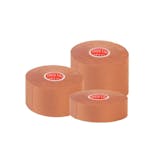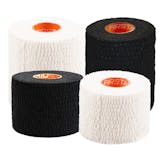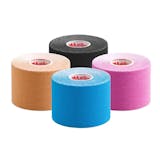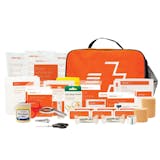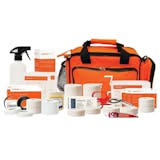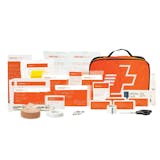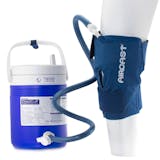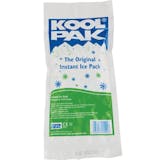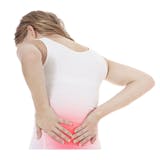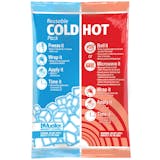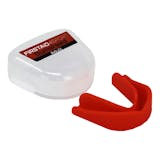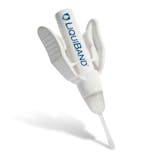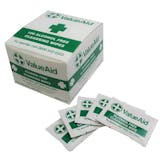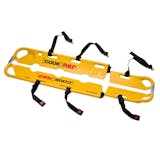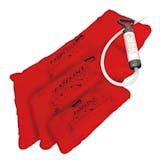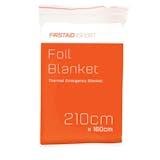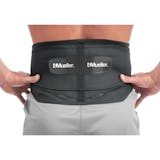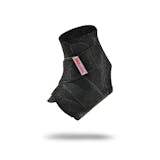Strapping & Taping Guide
Strapping and Tape should only be applied by those who are trained in there use.
There are different types of Strapping and Tape and the application of these range from simple to very technical.
To put it into perspective the application of a stretchy bandage to reduce swelling on a simple injury can have a positive healing effect.
But the application of the wrong Strapping or Tape on a complicated injury could cause permanent damage.
Only the trained can distinguish between the two sorts of injury.
Physiotherapists and Sports Medicine Professionals are trained to understand injuries and to apply the correct strapping and taping to the relevant injury.
The Different types of Strapping and Tape.
Because this is a technical area and because there are many types of Strapping and Tape this area can be confusing.
One of the confusing issues is that the words Tape, Strapping and Bandage cover both inelastic and elastic products.
Inelastic Tape
Usually reffered to as Zinc Oxide tape because the adhesive used is Zinc Oxide adhesive.
This tape limits joint movements that cause pain and immobilises the joint in the direction of the pain.
Generally Used to limit movement in sprains, twists and turns – or hard tissue injuries.
Most Zinc Oxide tapes are tearable, although it is a technique that you have to practice. Some have serrated edges making it much easier to tear.
This tape is also used for mending equipment as it does not stretch.
Elastic Tapes and Bandages
There is a range for different applications.
Used to give support and compression to weakened soft tissue. There are bandages that are designed to give varying degrees of compression and support.
Generally for kicks, pulls and strains – or soft tissue injury.
Athletic Tear Tape
The most versatile elastic tape for the sports first aid kit, very stretchy, useful for holding cold packs, tears easily and can be used for minor support. Easy to unwind ideal for securing lateral knee braces, as a compression wrap or for securing dressings.
This type of tape has become very popular and has thus come down in price.
Crepe Bandage
Made from cotton or cotton mix, tend to Slip off quite easily and have to be pinned or taped so not great for using while participating but very good cheap compression bandage if patient is resting.
Does not offer much support. Good to strap on an ice pack and offer minor support until the injured person was able to receive more appropriate assistance.
Cohesive bandage
Only sticks to itself, not to skin. Quite easy for a non technical person to use. Reduces swelling.
Again being used more and more and so the price is becoming more economical.
Elastic Adhesive Bandage left until last this is the most technical of bandages to apply and has to be applied with a lot of training. Elastic Adhesive Bandage (EAB) has a very strong adhesive and is used for strong support and compression.
Other Tapes
Microporous, Plastic and Silk Tape are three different surgical tapes used to fix a dressing in place, such as a non adherent dressing over a deep cut or graze.
Other Bandages
A conforming bandage is a soft stretchy bandage that has no support or compression properties at all. It is used for holding dressings in place.
Strapping and Taping Accessories
Tuffner – used before tape – quick drying, strengthens the skin. Helps secure tape and wraps.
Tuffner adhesive remover – removes any residue from tape and plasters as well as Tuffner spray.


